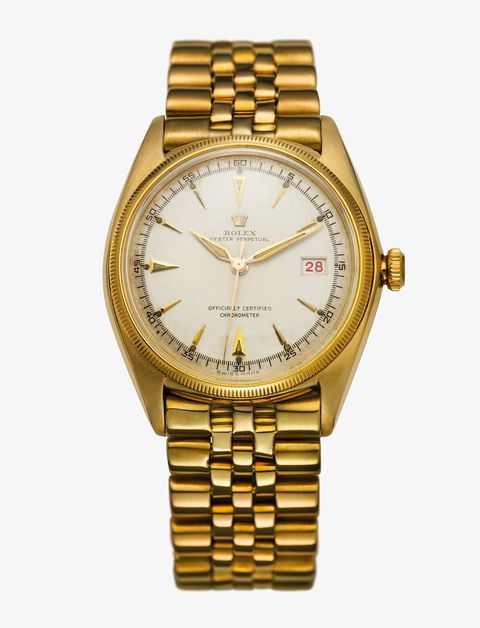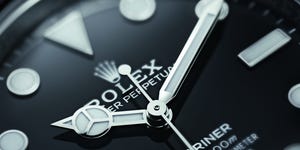Welcome to Watches You Should Know, a column highlighting little-known watches with interesting backstories and unexpected influence. Today: the Rolex Datejust.
Most watch lovers likely can’t imagine a time when the humble date window found on watches of all kinds today was considered innovative. That it is now taken for granted speaks to the massive and lasting impact that the Rolex Datejust had when it introduced this feature to the world in 1945. Second only to the display of time itself, this is probably the most practically useful information a watch can offer, and watches haven’t looked the same since.
The date window is most commonly found as an aperture at 3 o’clock or 6 o’clock, and sometimes with a magnifying glass over it like a generous water drop on the crystal (called a “cyclops” in watch jargon). Beneath the dial is a disc with 31 markings that jumps at midnight (or roughly around that time, depending on the watch), meaning that it will generally require adjustment via the crown’s second position during each month shorter than 31 days in duration. It is worth pointing out that watch designers have the technical ability to place the date window anywhere on the dial, so long it is on the disc’s path and the numbers are oriented accordingly.
Before the Datejust came along, the elements and technology to make it possible were already in place and in use by various watch companies. Calendar watches would often display the date around the dial’s periphery with a centrally mounted hand to indicate it. The window concept could also be found on such calendar watches where discs beneath the dial would display the month and day of the week.
Rolex’s contribution was simple and pragmatic, and it was intended more for the average consumer than the relatively complicated and expensive calendar watches were — even though the debut Datejust model itself was available only in 18k gold. The 1945 Rolex Datejust reference 4467 was 36mm wide and “waterproof” in the brand’s signature Oyster case, and the model was also used to introduce the now well-known Jubilee-style bracelet (the brand held a jubilee for its 40th anniversary to introduce the watch, and the name stuck).
The model has been in constant production since, and today the 36mm Rolex Datejust is still available alongside other sizes and variations. The modern Rolex Datejust, like the original, features automatic winding, but it now contains the state-of-the-art Rolex 3235 movement. With its cyclops magnifier (introduced in 1954) and a fluted bezel, the Datejust is perhaps the most iconic and recognized watch in the world — no wonder, then, that it has influenced watch design so significantly.
The date display window is now standard. In some corners of the internet, however, this genuinely pragmatic function has faced a backlash from chatroom watch enthusiasts who complain that it is too often poorly integrated into the design and ruins aesthetic symmetry. In response, many watch companies have begun offering more no-date options as well as making an effort to better match the color of the date wheel to that of the dial. Refinements are welcome, but ask any watch salesperson: consumers overwhelmingly prefer watches that feature the simple and genuinely useful date display.


















